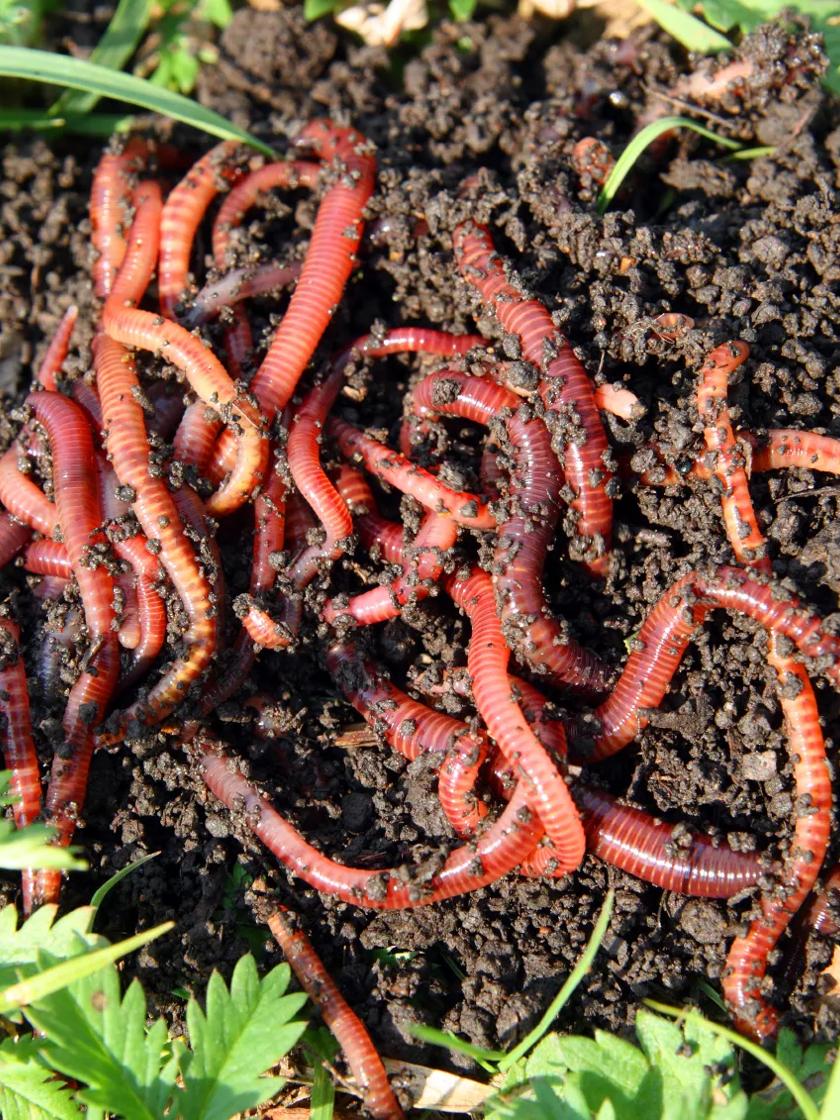Professional Lawn Care Assistance Powered by Lake Hickory Bait for Stunning Results
Professional Lawn Care Assistance Powered by Lake Hickory Bait for Stunning Results
Blog Article
Red Wigglers: The Unsung Heroes of Organic Waste Recycling
Red wigglers, or Eisenia fetida, offer as critical agents in the organic waste recycling procedure, changing disposed of materials into beneficial vermicompost. Their reliable break down of natural matter not just boosts dirt top quality yet also contributes to lasting waste monitoring techniques. As the world increasingly looks for services to combat waste build-up and boost farming productivity, understanding the function of these worms becomes necessary. What systems allow them to grow in garden compost atmospheres, and just how can they be properly made use of in both household and industrial setups? Checking out these concerns exposes the wider implications of vermicomposting in our ecological landscape.
What Are Red Wigglers?
The impressive strength of red wigglers, scientifically recognized as Eisenia fetida, emphasizes their crucial duty in organic waste recycling. These tiny, reddish-brown earthworms are usually found in decomposing raw material, such as compost heap and manure stacks. Lake Hickory Bait. Unlike various other earthworm species, red wigglers grow in nutrient-rich environments and are highly efficient at breaking down natural materials, making them necessary for vermicomposting

(Red Wiggler Express)Along with their role in waste reduction, red wigglers add to dirt wellness by boosting soil structure and oygenation with their tunneling tasks (Lake Hickory Bait). Their visibility in composting systems not just boosts disintegration prices yet also promotes a sustainable strategy to waste management, illustrating their significance in environmental preservation efforts
Benefits of Composting With Worms
Composting with worms, especially red wigglers, uses many advantages that enhance both waste management and dirt wellness. These worms successfully damage down natural waste, converting it right into nutrient-rich vermicompost that enhances dirt. This process accelerates disintegration, permitting for a quicker recycling of cooking area scraps and various other natural materials compared to typical composting techniques.
Furthermore, the vermicompost produced by red wigglers is including beneficial microbes, which help improve dirt structure, aeration, and dampness retention. This enhances the total health and wellness of plants, promoting vigorous development and enhanced yields in gardens and farming settings. The usage of worms in composting lessens the production of greenhouse gases, such as methane, adding to a much more lasting waste management system.

Exactly How to Start Vermicomposting
Establishing a vermicomposting system is a simple procedure that can produce substantial advantages for both waste monitoring and dirt enrichment. To start, select a suitable container, such as a plastic bin or wooden box, with appropriate air flow holes to make certain correct air movement. The measurements should preferably be about 2 feet by 3 feet, permitting enough room for the worms to grow.
Following, prepare bed linen material, which can contain shredded paper, cardboard, or coconut coir. This bed linens must be dampened to create an appropriate habitat for the worms. As soon as the bed linens is in area, present red wigglers (Eisenia fetida) into the container, commonly around one extra pound of worms for every single square foot of surface area.
Following the positioning of worms, include organic waste, such as fruit and vegetable scraps, coffee grounds, and smashed eggshells. With these actions, you will properly initiate a vermicomposting system that contributes to sustainable waste management and improves your soil.
Preserving a Healthy Worm Bin
(Red Wiggler Express)Maintaining a worm container growing needs regular interest and care to make sure the health and wellness of the red wigglers and the effectiveness of the composting procedure. Appropriate upkeep begins with monitoring the wetness degrees; the container must be damp however not soaked. click for more A great rule of thumb is to preserve an uniformity similar to a wrung-out sponge.
Delicately blending the bedding and food scraps every few weeks stops compaction and ensures that all worms have access to oxygen. Furthermore, it is important to feed the worms appropriately.
Temperature level regulation is one more crucial aspect. Red wigglers thrive in an array of 55 to 77 levels Fahrenheit. If the container ends up being also warm or cold, the worms may become stressed - Lake Hickory Bait. Lastly, periodically look for indications of health, such as worm population growth and the presence of healthy castings. By carefully handling these elements, one can preserve a robust and productive worm bin.
Effect On Sustainable Living
The effective upkeep of a worm bin not just benefits the health of red wigglers yet likewise contributes significantly to sustainable living techniques. By recycling organic waste, such as cooking area scraps and backyard debris, red wigglers aid draw away substantial quantities of product from garbage dumps. This decrease in waste not only decreases greenhouse gas exhausts however also decreases the ecological problem connected with waste management.
Additionally, the castings generated by red wigglers work as a nutrient-rich organic plant food, improving dirt health and wellness and advertising plant development. This natural choice to chemical fertilizers sustains lasting farming and gardening methods, reducing dependence on synthetic inputs that can damage ecological communities. Additionally, worm composting promotes understanding of waste management, encouraging people and communities to embrace even more sustainable behaviors.

Final Thought
In recap, red wigglers offer as essential factors to organic waste recycling through their reliable decomposition of organic products. By incorporating vermicomposting into waste management approaches, individuals and communities can dramatically lower waste while advertising environmental sustainability.
Report this page